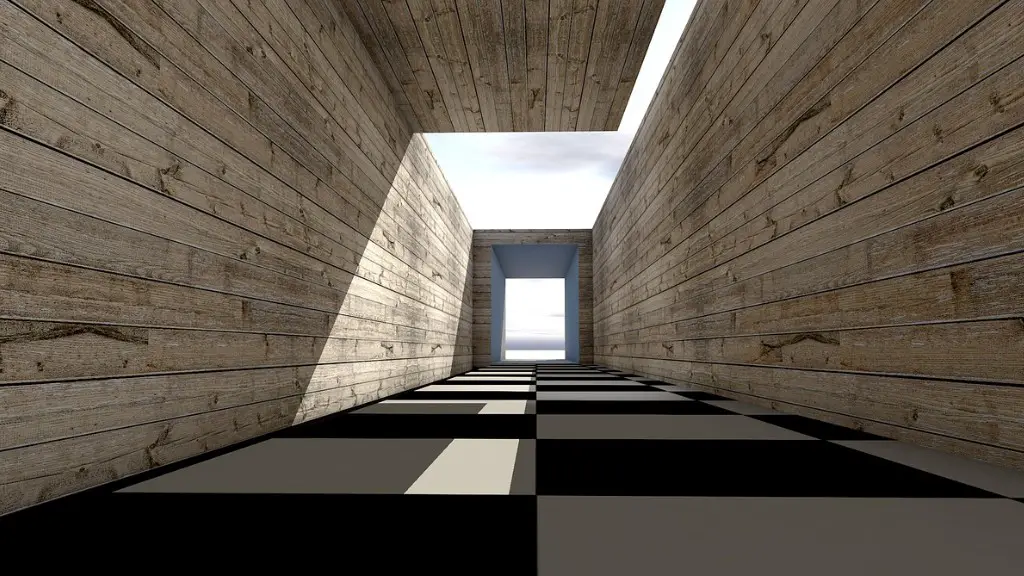Introduction
Architecture is a complex field of study requiring specialised skills and a creative eye. It’s a field of immense opportunities open to creative minds. Becoming an architect isn’t easy, but it is possible with the right application and dedication. There are many steps involved in the process, such as taking the right undergraduate degree and completing various internships and practical experiences. This article will provide an extensive overview of the steps needed to become an architect.
Choosing a Degree Program
The first step of becoming an architect is to choose a degree program. If you have a preference for a specific university, it’s important to check the program details and whether your chosen school offers a Bachelor of Architecture degree. It’s essential to select a program accredited by the National Architectural Accrediting Board (NAAB). Without NAAB accreditation, you will not be able to apply for licensure. Before enrolling in a program, consider money and time constraints, as the degree is lengthy and the cost of tuition fees can be expensive.
Internships and Practical Experience
All aspiring architects must complete a three- or four-year internship, often referred to as the Intern Development Program (IDP). The IDP gives learners the opportunity to experience the field and apply their theoretical knowledge learnt in the university. During the program, learners gain practical experience under the close observation and guidance of a mentor. Additionally, they are also exposed to practising architects, who can provide invaluable advice. The duration of the program can be as long as seven years, depending on the individual state’s licensing requirement and the depth and breadth of the internship program.
Licensing Exam
Once the internship is completed, the next step is to pass the Architectural Registration Exam (ARE). This exam consists of seven divisions, covering all aspects of architecture. All questions are Multiple-Choice and will require learners to draw on their knowledge and experience. Passing the exam isn’t easy and requires a good understanding of the different topics, from computer technology and construction practices to historical preservation. If a student is unable to pass the ARE, they can otherwise become a registered architect via reciprocity (based on the licensure) of the equivalent exam in other jurisdictions.
Advanced Degrees
After completing the ARE exam and gaining licensure, individuals may choose to go back and get an advanced degree in architecture such as a Master of Architecture degree, which is an ideal for those interested in teaching, research and management in the field. Having a master’s degree can also vastly improve the job prospects of any aspiring architect, as advanced educational qualifications are an attractive commodity to employers.
Network, Continuously Learn and Develop Skills
Architects don’t just work in offices. It’s important that they gain knowledge and experience in the field. Venturing out in the real world, learning, observing and connecting with other professionals, is also crucial. Other skills that are also important are highly developed drawing and sketching capabilities and the ability to think in three dimensions. Architects should also keep up with the latest trends in their field and be ready to face any challenge.
Confidence and Reward
Confidence goes a long way when it comes to becoming a successful architect. You need to believe in yourself that you have what it takes to realise your plans and be proud of your achievements. Architecture, like many other career paths, isn’t without its challenges, but it also offers many rewards. Architects are able to bridge the gap between dreams and reality, by creating physical structures that bring people together, promote pro-social interaction and allow individuals to experience a sense of accomplishment.
What to Expect from the Career of Architecture
Architecture is a highly rewarding career path and offers many opportunities for professional advancement. Being an architect requires ambition, creativity, determination and the capacity to think abstractly. It is also recommended to take note of the local job market and salary expectations. Architecture can be lucrative as different countries pay different salaries. Additionally, finding a job in an area or specialisation that is highly in demand can improve career prospects.
Exploring New Areas and Fields
Architects today are required to diversify their skills and knowledge to keep up with the ever-evolving world of architecture. There has been an increased effort to venture into uncharted territories and explore new areas and fields of architecture, such as sustainable design and public infrastructure. The goal is to foster a greater appreciation for architecture, its potential and its effects on the environment.
Career Opportunities for Architects
In today’s architectural market, there are more opportunities than ever for aspiring architects. Architects can pursue careers in private firms, work for large corporations, teach, create their own business, or even join the public sector. Other areas to consider are landscape design, urban design and interior design, each offering unique career paths within the field of architecture.
Contribution to the Local Community
Architects have a specialised role within the communities they work in. An architect should strive to design and create with the goal of making a positive contribution to the local community. Architects should be constantly looking for ways to improve society and help shape communities. They can do this by engaging with members of the community, listening to their ideas and promoting harmless designs that inspire collaboration, creativity and unity.
Social Responsibility
As architects, we all have a responsibility to the world we live in. In the wake of the pandemic, the need of architecture to adapt with the changing needs of society has become more apparent. Architects can play a vital role in helping to shape the world of the future. There has never been a more important time for architects to look at ways to make the world a more sustainable and equitable place.
Embracing Change
Shifting technology, environmental concerns and changing trends can have a profound impact on the field of architecture. It has become essential for architects to keep informed of the latest developments and embrace new techniques and tools. Making use of digital tools, software and technology can open up a world of possibilities for any aspiring architect. Being able to understand the larger implications of their work can also help architects to create better, more sustainable designs.
Creative Thinking
Architects must be able to think outside the box and come with creative solutions to complex design problems. To advance in this field, creative thinking is essential. Architects must find ways to stay fresh and relevant by developing their creativity and coming up with inventive solutions. It is important to stay informed, collaborate with other professionals, explore new areas of study and think innovatively to ensure success in the world of architecture.



